Introduction
A. The Unique Philodendron Verrucosum
Welcome to the world of the enchanting Philodendron Verrucosum! Widely recognized as an exotic houseplant, this extraordinary species showcases its unique velvety leaves, making it a top choice for plant enthusiasts. But it’s not just its stunning looks that draw attention – there’s so much more to learn and appreciate about this remarkable plant.
B. Popularity in the Plant Community
Why has the Philodendron Verrucosum gained such immense traction in the plant community? The answer lies in its unparalleled beauty, fascinating growth patterns, and relatively easy care process. With its lush, velvety foliage and striking appearance, it is easy to understand why plant lovers flock to include this species in their collections.
Moreover, the Philodendron Verrucosum adds flair and extravagance to your indoor spaces, infusing them with the essence of nature while boosting your interior design choices.
Embrace the world of Philodendron Verrucosum as we delve into its origins, provide tips on how to grow and care for it, explore its uses, and uncover the secret behind its stunning appeal. This comprehensive guide will give you all the necessary knowledge to embark on a successful journey with this captivating plant.
Origin and Distribution of Philodendron Verrucosum

A. The Native Habitat of Philodendron Verrucosum
Venturing into the verdant territories of Central and South America, specifically in countries like Colombia, Costa Rica, Panama, and Ecuador, we find the origins of the Philodendron Verrucosum. Growing naturally in the dense rainforest regions, this majestic plant thrives in the warm and humid understory of the tropical jungle.
B. Climbing the Jungle High
As an epiphytic plant, the Philodendron Verrucosum displays an interesting characteristic: their root systems adapt to living on trees rather than being buried in soil. With their aerial roots latching on to tree trunks or branches, these plants experience a natural climbing behavior. This enables them to ascend higher and enjoy access to an abundance of light filtered through the forest canopy.
C. Cultivation in Different Regions
In recent years, plant enthusiasts around the world have increasingly adopted the Philodendron Verrucosum as part of their home collections. Particularly popular in North America, Europe, Asia, and Oceania, plant lovers recreate the tropical conditions to successfully grow and nurture this remarkable plant, allowing it to adorn their living spaces with its stunning presence.
D. Embracing the Beauty of Philodendron Verrucosum
With its roots firmly grounded in Central and South America, the Philodendron Verrucosum has spread across the globe, capturing the hearts and imaginations of plant aficionados. Its fascinating characteristics, including its captivating beauty and unique epiphytic nature, have elevated its status within the plant kingdom. Engaging in a deeper understanding of this plant’s origin and distribution gives us valuable insights to replicate the ideal conditions for its growth and wellbeing.
Description of Philodendron Verrucosum
A. The Beauty of Velvety Leaves
One of the most distinguishing features of the Philodendron Verrucosum is, undoubtedly, its stunning foliage. Sporting large, heart-shaped leaves with a deep green hue, their velvety texture entices admiration from all who encounter them. The leaves’ delicate, plush appearance creates an alluring contrast against the sturdy vines from which they sprout.
B. The Intriguing Patterns and Colors
Adding to its visual appeal, the Philodendron Verrucosum exhibits captivating patterns on its leaves. Younger leaves often display a bright red or burgundy color on their underside. As the leaves mature, they unfurl to reveal intricate white or silver vein patterns on their surface, further accentuating the plant’s beauty.
C. The Magic of Hairy Petioles
Another distinctive characteristic of the Philodendron Verrucosum is its hairy petioles. These often overlooked structures not only provide support to the leaves but also play a crucial role in helping the plant climb trees to access optimal light. The tiny, brownish hairs on the petioles create friction against the tree’s bark, aiding the plant in its ascent to higher regions.
D. The Overall Dimensions
When it comes to size, the Philodendron Verrucosum is quite impressive. In ideal conditions, this plant can reach lengths of up to several meters long. Its leaves can grow up to 45 cm (18 inches) or even longer, giving this plant the ability to attract attention even from a distance.
E. A Stunning Visual Experience
Embodied with rich green, velvety leaves adorned with mesmerizing patterns, the Philodendron Verrucosum exudes sophistication and luxury. The plant’s distinctive features, coupled with its impressive size, ensure it stands out among other houseplants. The Philodendron Verrucosum brings the allure of the tropical jungle into your living space, creating an unforgettable visual experience.
Growth and Care for Philodendron Verrucosum
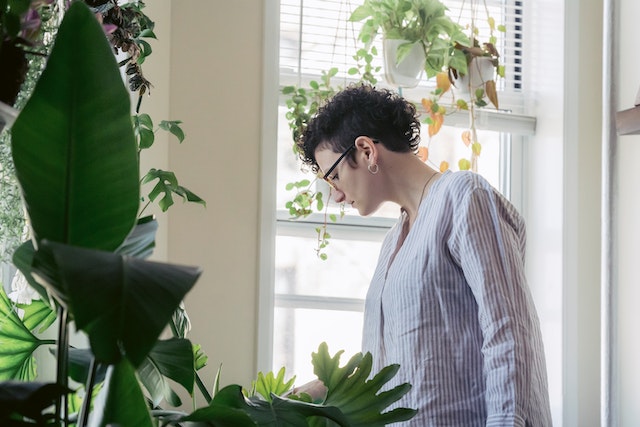
A. Crafting the Right Conditions
Growing these plants at home necessitates as close a replication of their natural habitat as possible. Given its origins in tropical regions, providing warm temperatures, high humidity, and filtered sunlight promotes a healthy, flourishing plant.
B. Temperature and Humidity Needs
The ideal temperature range for Philodendron Verrucosum falls between 65°F to 85°F (18°C to 29°C). This plant thrives in high humidity levels, typically around 70-80%.
C. Guiding Light for Growth
Filtered light, mimicking the conditions under a rainforest canopy, suits this plant best. For indoor growth, a north or east-facing window works well. If this isn’t possible, then a shaded part of a south or west-facing window can also be employed. Direct sunlight can cause damage, leading to leaf burn.
D. Perfect Potting Mix
Philodendron Verrucosum prefers a well-draining, loose potting mix. A blend of perlite, peat moss, and orchid bark works well. The potting mix should maintain moisture but also drain well to prevent waterlogging, which can lead to root rot.
E. Watering and Feeding Routine
Water the Verrucosum when the top 1-2 inches of soil feels dry to touch. Overwatering can lead to root rot, a common issue for houseplants. During the growing season (Spring and Summer), feeding your Philodendron Verrucosum with a balanced houseplant fertilizer every 2-3 weeks promotes growth and maintains leaf color.
F. Common Issues and Solutions
Yellowing or wilting leaves can indicate overwatering, insufficient light, or inadequate humidity. Cut back on watering, adjust the light conditions, or increase humidity to mitigate these issues. This plant can also attract pests such as spider mites, scale, and aphids. Regular inspections and early treatment using insecticidal soap or neem oil can keep pests under control.
G. Growing with Love and Care
Your plants can thrive and grow lush and healthy with the right care and consistent attention, adding an exotic touch to your home. Remember that patience is essential when raising any houseplant, and this one is no exception! Continue to fine-tune your care routine as you learn about your plant’s specific requirements, and you will soon be rewarded with its stunning display.
Propagation of Philodendron Verrucosum
A. Selecting Your Method
Most houseplant enthusiasts can’t resist the thrill of propagating their favorite plants and expanding their collection. When it comes to the Philodendron Verrucosum, propagation by stem cuttings is the most popular and effective method. This technique, known for its straightforward approach, introduces a new specimen that shares the same beautiful characteristics of its parent plant.
B. Preparing Equipment and Materials
To ensure success during the propagation process, gather the necessary materials beforehand: a sharp, sterilized cutting tool (such as a pair of pruning shears or a knife), a small pot filled with a suitable potting mix (as mentioned in the Growth and Care section), and a clear plastic bag or a propagation box to create a humid environment.
C. Taking Stem Cuttings
First, identify a healthy and robust stem section on your Philodendron Verrucosum. Ideally, select one with a few leaves and at least one healthy node (where the aerial roots emerge). Make a clean cut about 1-2 inches below a node, using your sterilized cutting tool. If desired, remove one or two leaves from the cutting to encourage more energy directed towards root development.
D. Planting the Cutting
Dampen the potting mix in your prepared small pot and create a hole in the center using your finger or a pencil. Next, carefully insert the bottom of the stem cutting (where the node is) into the hole, making sure the node makes contact with the potting mix. Firmly press the soil around the cutting to provide adequate support.
E. Encouraging Root Growth
Place the potted cutting in a warm, bright location, away from direct sunlight, to avoid scorching the delicate, new leaves. To maintain high humidity levels, cover the pot with the clear plastic bag or place it inside a propagation box. Remember to check for condensation daily and mist the cutting if necessary to maintain moisture.
F. Rooting and Transplantation
Within a few weeks, you should notice new roots emerging and growing. When the roots are well-developed and at least 2-3 inches long, you can carefully transplant the cutting into a larger pot. At this stage, it is crucial to continue providing appropriate care, mimicking conditions of its natural habitat, thus establishing a healthy and vigorous Philodendron Verrucosum.
Benefits and Uses of Philodendron Verrucosum

A. Air Purification Powerhouse
Apart from their visual appeal, Philodendron Verrucosum plants have another valuable trait: their ability to purify indoor air. Like many other plants, the Verrucosum works tirelessly to remove harmful pollutants from the air, such as formaldehyde, benzene, and ammonia. In doing so, the plant contributes to healthier indoor environments for you and your loved ones.
B. Enhancing Psychological Wellness
Adding greenery to your living space has been shown to bolster psychological well-being and reduce stress. Caring for the Philodendron Verrucosum can be therapeutic and calming, especially as you watch your plant flourish and thrive under your nurturing efforts. This sensory connection with nature can create a soothing atmosphere in your home, leading to improved mental health.
C. Elevating Aesthetic Appeal
Integrating the Philodendron Verrucosum into your home decor brings a touch of elegance and tropical splendor. The plant’s captivating foliage and unique characteristics provide a focal point or conversation starter for your living space. In addition, its stunning appearance adds a sense of luxury and sophistication, enhancing the overall aesthetic appeal of any room.
D. Boosting Humidity Levels
The Philodendron Verrucosum plays a role in raising indoor humidity levels as it releases moisture through a process called transpiration. By doing so, the plant helps maintain relative humidity in your home, providing a comfortable environment for you and benefiting other plants in your collection that thrive in similar conditions.
E. An Exemplary Collector’s Item
For plant enthusiasts, the Philodendron Verrucosum holds a special place as a highly coveted collector’s item. Its stunning appearance, along with its rarity and unique qualities, makes it particularly alluring for those who wish to showcase a diverse and outstanding collection of plants.
F. Embracing the Marvels of Philodendron Verrucosum
The benefits and uses of the Philodendron Verrucosum are abundant, from air purification and improved psychological well-being to enhancing your home’s aesthetic appeal. By adding this extraordinary plant to your collection, you not only embrace the marvels of the tropical rainforest, but you also invest in a healthier and more harmonious living space.
Potential Risks and Dangers of Philodendron Verrucosum

A. Toxicity to Pets and Humans
While Philodendron Verrucosum is a beautiful addition to any indoor plant collection, it is not without its risks. The plant contains calcium oxalate crystals, which can be toxic if ingested by humans or pets. Symptoms include irritation to the mouth, throat, and gastrointestinal tract. To ensure safety, place the plant out of reach of curious children and pets.
B. Insect Pests
Philodendron Verrucosum, like other indoor plants, may attract common houseplant pests such as spider mites, aphids, and mealybugs, which can damage the plant if not swiftly addressed. Regular inspection and early treatment can help keep these pests at bay and preserve the health of your plant.
C. Risk of Overwatering
Overwatering is a common issue that can lead to root rot, a harmful condition that severely affects the health of your Philodendron Verrucosum. The plant shows yellow leaves, droopiness, and wilting as signs of overwatering. Make sure to water your plant only when the top tier of soil is dry to the touch to avoid this issue.
D. Requiring High Humidity
Being an inhabitant of the tropical rainforest, Philodendron Verrucosum thrives in conditions of high humidity, which can be challenging to maintain in certain indoor conditions. This can lead to brown leaf tips or poor growth if the appropriate humidity is not maintained.
E. Light Requirements
Getting the lighting right for Philodendron Verrucosum can be tricky. Too much direct sunlight can scorch the leaves, but insufficient light can impede its growth or fade its foliage color. Monitor the plant’s reaction to light and adjust as necessary for optimal health.
F. Understanding and Mitigating the Risks
While there are potential risks and dangers related to growing a Philodendron Verrucosum, with proper knowledge and care, the majority of these challenges can be mitigated. Gardening is a journey with trial and error as constant companions, but the reward of a thriving plant makes it all worth the effort.
Frequently Asked Questions about Philodendron Verrucosum
A. Why are my Philodendron Verrucosum’s leaves turning yellow?
If your Philodendron Verrucosum’s leaves are turning yellow, you’re most likely dealing with an overwatering issue. Ensure the top inch or two of the soil dries out before you water the plant again. Assess the potting medium as well — a poorly draining soil can compound overwatering problems.
B. Why are the leaves of my Philodendron Verrucosum curling?
Curling leaves often indicate a deficiency in water or humidity. Both conditions can make your Verrucosum’s leaves curl or roll. If the soil is dry, water the plant. To increase humidity, place a tray filled with water pebbles nearby, use a humidifier, or gently mist the plant regularly.
C. How often should I fertilize my Philodendron Verrucosum?
During the growing season (spring and summer), regularly feed your plant with a balanced houseplant fertilizer every 2-3 weeks. In the dormant months (fall and winter), you can reduce the frequency to once a month or pause the feeding process entirely.
D. How much light does a Philodendron Verrucosum need?
A Philodendron Verrucosum prefers bright but indirect light.
E. Is Philodendron Verrucosum suitable for terrariums?
With its love for high humidity, a Philodendron Verrucosum can thrive magnificently in a terrarium environment. Its dramatic foliage provides a stunning visual piece in a terrarium setup.
F. Is Philodendron Verrucosum toxic to cats and dogs?
Yes, Philodendron Verrucosum contains calcium oxalate crystals which could be toxic to cats, dogs, and humans if ingested. Ensure that you place the plant out of reach of your pets and children.
G. How to propagate Philodendron Verrucosum?
Propagation of Philodendron Verrucosum is typically done by stem cuttings. You might want to refer to section V of this guide for a detailed propagation process.
In conclusion, the key to successfully growing a Philodendron Verrucosum, like any other plant, requires understanding its natural habitat and imitating those conditions as closely as possible in your home. With patience and care, you will eventually become the proud carer of a healthy, vibrant Philodendron Verrucosum.
Conclusion
In summary, integrating a Philodendron Verrucosum into your indoor plant collection involves a considerable blend of understanding, care, and diligence. From propagation and care tips to its benefits and potential risks, this guide strives to provide a comprehensive understanding of this unique and captivating plant.
Like all plants, the Philodendron Verrucosum has its unique needs and preferences. However, the effort you put in to understand and cater to these needs will be duly rewarded. With its magnificent foliage and air-purifying properties, this plant not only brings a touch of tropical beauty into your living space but also contributes positively to your overall well-being, making it an undeniable gem in any houseplant collection.
By paying attention to its water, light, and soil needs, dealing promptly with potential pests, and maintaining optimal humidity levels, you will enjoy the growth and beauty of this spectacular plant. Regardless of the occasional challenges, the captivating charm of the Philodendron Verrucosum makes it a prized possession that’s worth every bit of your gardening efforts.

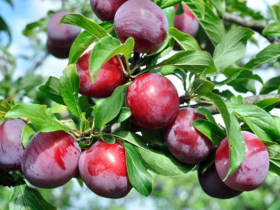
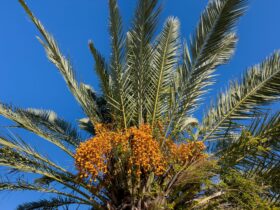

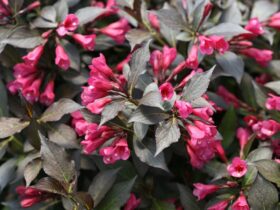
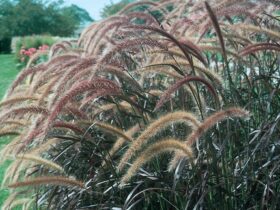
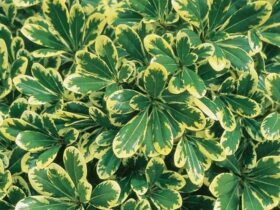

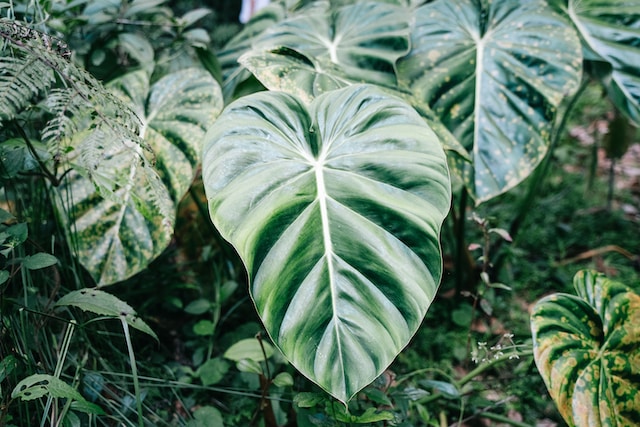
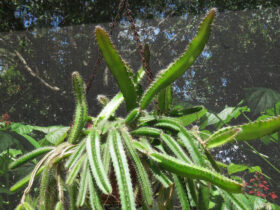

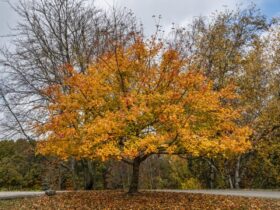
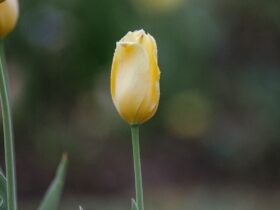
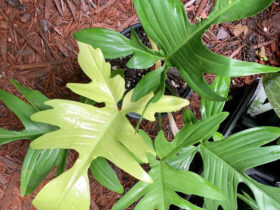
Leave a Reply